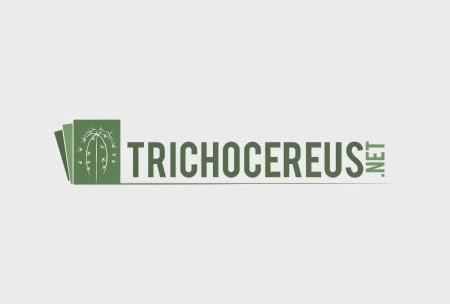BK10511.1 Trichocereus vollianus, between Arani & Rodeo, Cochabamba, Bolivia
Copyright: Ben Kamm, Sacredsucculents.com
This is a very interesting plant and there arent so many descriptions available about it. This plant was encountered during the 2010 field trip. I am not sure if the ID is correct but I´ll add the description now and maybe we can get to the bottom of it. This plant has a lot of similarities to Trichocereus Lamprochlorus, which grows in Cochabamba in Bolivia too. The original description of this plant came from Backeberg in his book KAKTUS-ABC. The original typus location was said to be Arque in Cochabamba. The shoots have a maximum diameter of up to 10 centimeters, approximately 13 ribs and a very bright green yellow color. The epidermis of this plant has similarities to Trichocereus Spachianus, which has a very bright green color too. The ribs are 7 mm broad and are up to 5 mm high. The areoles are approx. 2-2,5 cm apart from each other. The plant has 7-12 radial spines and very fine and thin spines that can get up to 7 mm long. There usually is only one middle spine which can reach a lenght of 2,5 cm. All spines are yellow colored (Backeberg used the term “Amber”).
Flowers: The flowers of Trichocereus Vollianus are white and up to 12 cm long. However, I assume that the flowers depend greatly on the health of the plant and larger flowers wouldnt come as a surprise to me.
Fruit: Green and very hairy.
How to keep it apart from Trichocereus Spachianus?: Trichocereus Vollianus is very similar to Trichocereus Spachianus but thicker, even more shiny and has a brighter green epidermis. Backeberg also mentioned that they work very well as a grafting stock.
There also was a Trichocereus Vollianus var. Rubrispinus with reddish spines, which would probably be regarded as nothing but a local form under modern taxonomy. I encountered populations that had all kinds of forms growing together and this kind of stuff isnt really enough to justify a new species. I own a plant that I suspect to be Trichocereus Vollianus and I will post some pics of it soon.
Where to get seeds of Trichocereus Vollianus?: Well, it´s definitely a rare species. Sacred Succulents collected some seeds and gave them away under the name mentioned above but apart from that, there are very few sources that provide VIABLE seed. I still have some Seeds from Köhres but couldnt get them to germinate. Succeed had them every now and then and it´s worth a try to ask Sacred Succulents because they probably grew some from the seeds they collected. You could also make a posting in our Trichocereus Facebook group because I know of some people who were able to get some seeds back when they were sold by Sacred Succulents. Definitely an interesting plant!
BK10511.1 Trichocereus vollianus, between Arani & Rodeo, Cochabamba, Bolivia
